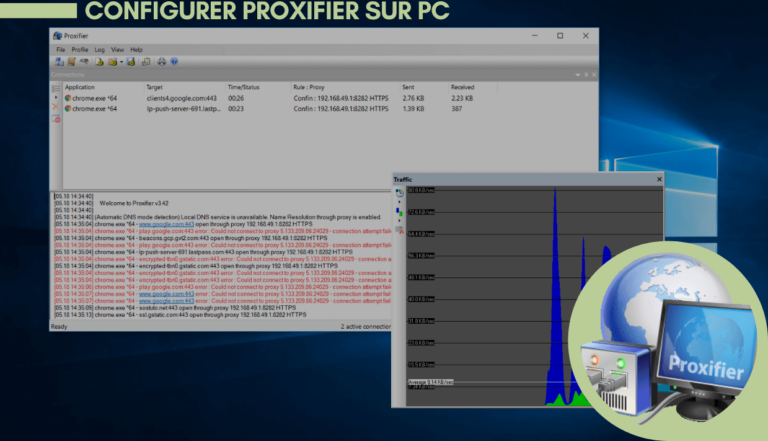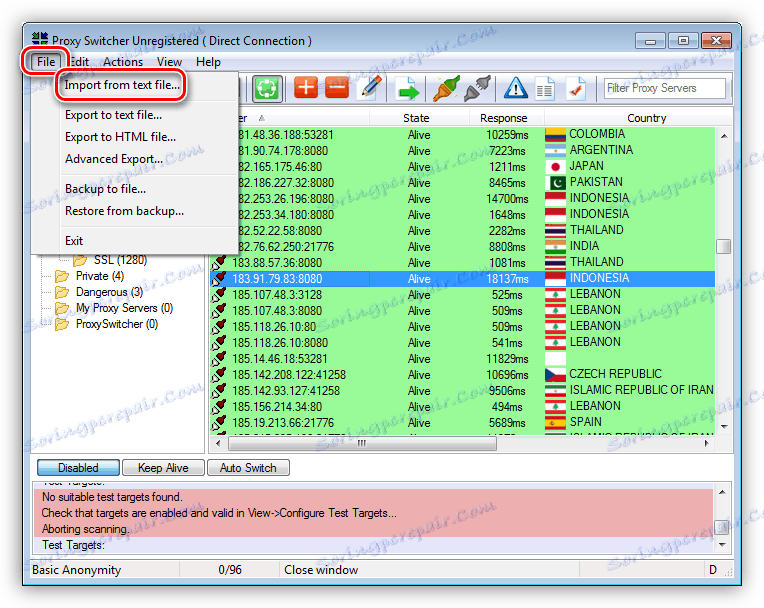

- #PROXY LIST FOR PROXIFIER UPDATE#
- #PROXY LIST FOR PROXIFIER PASSWORD#
- #PROXY LIST FOR PROXIFIER DOWNLOAD#
If your proxy server requires authentication, make sure that you configured this setting in nfig. The proxy server required a sign-in and none was provided. Revisit the proxy configuration and make sure that the URLs have been opened. The proxy hasn't been opened for the requested URL. The following table describes 403 and 407 proxy errors: Error If the proxy isn't correctly configured, a 403 or 407 error message appears: Make sure that the nfig file is correctly configured. If you see the message Unable to connect to the remote server, PowerShell is trying to make a direct call without using the proxy or DNS isn't correctly configured. If the proxy is correctly configured, a success status appears: The settings in winhttp/netsh shouldn't affect these cmdlets. PowerShell uses the configuration in nfig to contact the proxy. (Technically, the first call is to, and this URI also works, but the other URI is quicker to respond.) In PowerShell, run Invoke-WebRequest -Uri. To check whether the Azure AD Connect server is connecting to the proxy and the internet, use some PowerShell cmdlets to see if the proxy is allowing web requests.
#PROXY LIST FOR PROXIFIER PASSWORD#
Is the password a temporary password that must be changed? Is it actually the correct password? Try to sign in to on a different computer than the Azure AD Connect server and verify that the account is usable. If the installation wizard is successful in connecting to Azure AD but the password itself can't be verified, you see this error:

If you see this error, verify that the endpoint has been added to the proxy. This error appears if the endpoint can't be reached and your Hybrid Identity Administrator has MFA enabled. If you use a Microsoft account instead of a school or organization account, you see a generic error: If nfig looks correct, complete the steps in Verify proxy connectivity to see if the issue is also present outside the wizard. If you see this error, verify that the nfig file is correctly configured. This error appears when the wizard itself can't reach the proxy. The installation wizard hasn't been correctly configured The following issues are the most common errors you might encounter in the installation wizard. If an issue occurs, the error most likely will appear on the Connect to Azure AD page in the wizard because the proxy configuration is global. On the Configure page, it changes to the account running the service for the sync engine. On the Connect to Azure AD page, it uses the user who is currently signed in. The installation wizard uses two different security contexts. Used to configure your Azure AD directory and import/export data.
#PROXY LIST FOR PROXIFIER DOWNLOAD#
Used to download CRL lists for multifactor authentication (MFA). Used to download certificate revocation list (CRL) lists. The information is provided here to help with troubleshooting for the initial configuration.

This list doesn't include any optional features, such as password writeback or Azure AD Connect Health. Of these URLs, the URLs listed in the following table are the absolute bare minimum to be able to connect to Azure AD at all. The official list is documented in Office 365 URLs and IP address ranges. The proxy server must also have the required URLs opened.

#PROXY LIST FOR PROXIFIER UPDATE#
For that reason, we recommend that you update nfig as described in this article. Even if the file works during the initial installation, the system stops working during the first upgrade. However, the file is overwritten on every upgrade. Some non-Microsoft blogs indicate you should make changes to instead of the nfig file.


 0 kommentar(er)
0 kommentar(er)
